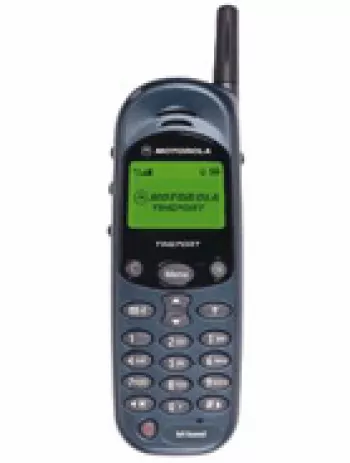
Overview of Motorola Timeport L7089
The Motorola Timeport L7089 was one of the groundbreaking mobile phones released by Motorola in the early 2000s. This device, part of the Timeport line, was designed to cater to business professionals who required reliable communication on a global scale. Featuring tri-band GSM technology, it was one of the first phones to offer international roaming capabilities, making it an excellent choice for frequent travelers.
Design and Build
The Motorola Timeport L7089 boasted a robust design typical of early mobile phones. Its dimensions were 130 x 46 x 23 mm with a weight of 140 grams, making it slightly bulky by today's standards, but standard for its era. Its casing was available in three different colors, each offering a professional and sleek appearance.
Display
The handset came with a monochrome graphic Optimax display capable of displaying up to 5 lines of text. Its simplicity suited its primary function — efficient communication, without the distractions and complexities of modern smartphones. The straightforward interface made navigation intuitive for its users.
Network Capabilities
The phone was equipped with GSM technology, supporting GSM 900, 1800, and 1900 bands. This tri-band capacity was significant during its release, as it allowed global connectivity across different regions. However, it lacked both GPRS and EDGE support, reflecting its primary functionality as a device focused on voice calls and SMS messaging.
Memory and Storage
In terms of memory, the Motorola Timeport L7089 could store 100 contacts in its phonebook. Call records were limited to 10 dialed, 5 received, and 5 missed calls. There was no card slot available, highlighting its position as a communication tool rather than a multi-functional smart device.
Sound and Alerts
Sound features on this device were basic, with no loudspeaker or 3.5mm jack. Alert types were limited to monophonic ringtones, which were the norm for cell phones of its generation. While minimal by current standards, these features adequately served the needs of users at the time.
Communication Features
The Motorola Timeport L7089 lacked wireless communication features such as WLAN and Bluetooth, which were not standard in mobile phones at the time. It did, however, include an infrared port for data transfer, a common feature for devices of its kind. The absence of positioning technology and a radio emphasized its focus on functionality and practicality.
Battery and Power
The device was powered by a removable Li-Ion 600 mAh battery. It offered a standby time of up to 150 hours and a talk time of approximately 210 minutes, which was considered efficient for its era. The removable nature of the battery allowed users to replace it easily, extending the phone's longevity.
Additional Features
Additional features of the Motorola Timeport L7089 were limited but useful. The phone supported SMS messaging in 27 languages, making it accessible to a broad user base. Basic utilities like a clock were included, but there was no alarm function. The absence of games and Java support underscored its intended use as a straightforward communication device.
Legacy and Conclusion
The Motorola Timeport L7089 holds a special place in the history of mobile technology. Its introduction of tri-band technology on a wide scale helped set the standard for future mobile phones, especially for frequent travelers and business professionals. Despite its limited functionality compared to modern devices, it served its purpose well, providing reliable communication and a durable design.
Key Features of Motorola Timeport L7089
- Tri-band GSM support (GSM 900 / 1800 / 1900), allowing for international roaming capability.
- Compact dimensions (130 x 46 x 23 mm) make it portable and easy to carry.
- Lightweight design, weighing just 140 g, enhancing portability.
- Monochrome graphic Optimax display with 5 lines for clear text display.
- Infrared port for wireless data transfer.
- Phonebook capacity of 100 contacts, sufficient for basic needs.
- Battery offering up to 150 hours of standby and 210 minutes of talk time for extended use.
- Support for SMS messaging.
- Available with language support for 27 different languages, catering to a diverse user base.
Disadvantages of Motorola Timeport L7089
- Does not support GPRS or EDGE for data connectivity.
- Lacks a color display, featuring only a monochrome graphic with 5 lines.
- No memory card slot for additional storage.
- Limited phonebook capacity to only 100 contacts.
- No loudspeaker option and only supports monophonic ringtones.
- Does not have a built-in camera.
- Absence of 3.5mm headphone jack for audio connectivity.
- No support for WLAN, Bluetooth or GPS functionality.
- Limited call records storage for only 10 dialed, 5 received, and 5 missed calls.
- Lacks features such as alarm clock and games.
- Does not support Java applications.
- Limited battery capacity with a talk time of 210 minutes and standby time of 150 hours.
View Also
More Phones
All Rights Reserved +14266 Phones © Mobilawy 2025

























